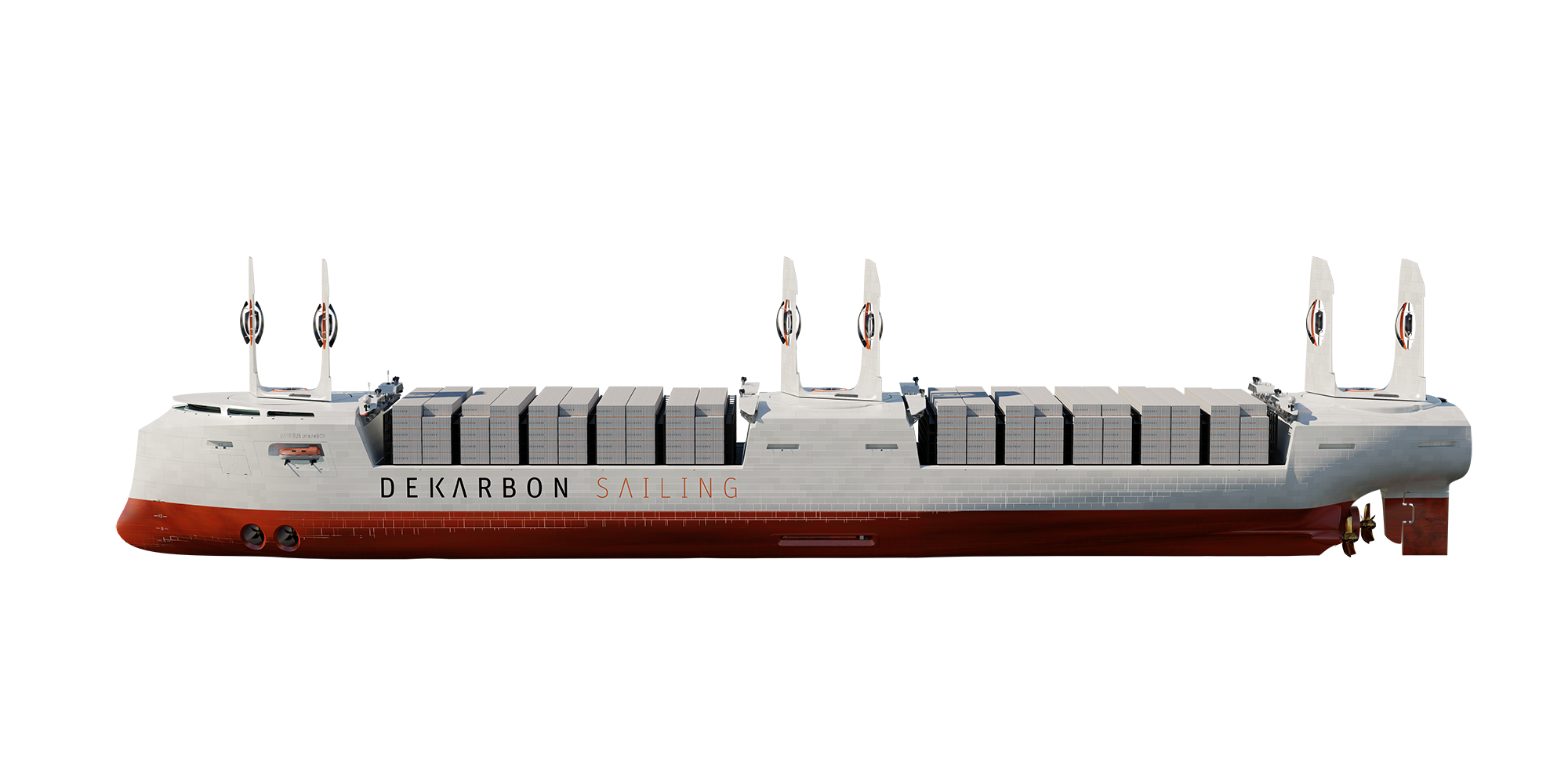The transport of trade and consumer goods is essential for the economy and for people themselves. The sea route is one of the most important trade routes in the world. The long distances across the world's oceans are covered by thousands of different ships every day. However, the current overseas ships transporting containers or other goods across the seas account for 3 percent of the world's CO2 emissions. Climate change is becoming more severe and visible every year. It is all the more important to reduce and minimize anthropogenic causes of climate change. This concept deals with finding an alternative for the current heavy oil burners. It combines the possibilities of converting wind energy into electrical and kinetic energy.
DEKARBON SAILING

Wingsail & Flettner-Rotor
Engine
Stabilizer
Positionlight
In the design phase, a basic concept has been worked out that forms the basis for the design of this work. The power for the electric drive is supplied by an integrated redox flow accumulator. This also provides the power for the on-board systems, such as position lights, instruments or lighting. The accumulator is charged by a shore connection, which can be used during loading times due to the integration into the port's infrastructure. In addition, the ship has its own generators in the form of Darrieus rotors, which convert wind energy into electrical energy regardless of the ship's speed and store it in the ship's redox flow systems. In external charging stations, the ships can pause and recharge the integrated batteries.
The "Set Up" was assembled from prioritized components in order to build a reference of the concept that is as close to reality as possible. This scale is used as a reference for the design. Here, the Set Up's priority is directed towards the propulsion system and the size scaling of the vessel due to the containers to be transported.